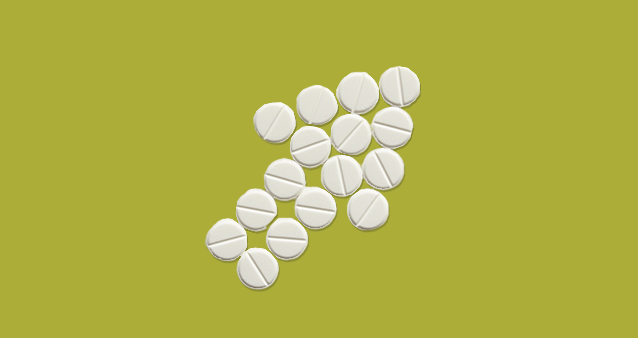New Suggested Margins for the 2023/2024 Medical Aid Increases Just Announced

The South African Council for Medical Schemes has just announced their suggested increase percentage margin (5% + utilisation) for the 2023/2024 medical aid scheme premium increases coming up. Let's find out what that means for you and if there's anything you can do to ease the impact of coming changes on your pocket.
Medical Aid Price Hike Margins for 2023/2024: What's the buzz?
Every year, medical aid schemes increase the medical scheme contributions members need to pay by a percentage. This percentage can be lower or higher, depending on recommendations and limitations from governing bodies like the Council for Medical Schemes and other factors.
With the average increase in our Medical Scheme Contributions coming up soon, many of us are scratching our heads. How does it work, what does it mean for us, and what can we do to keep saving? Let's dive into the nitty-gritty of medical aid price increases and see what's up to make the most of the situation.
Who decides how much medical aid contributions should go up?
Medical aid schemes must submit their increases to the Council for Medical Schemes (CMS) for approval every year. The CMS is the big voice for medical schemes in South Africa, and they must approve all product changes before the schemes can make them available to customers.
Thankfully, the council is considering the affordability of contribution increases in light of the current economic climate and the high pressure already on everyday South Africans in their suggested increase levels.
For the 2023/2024 medical aid increases, they're suggesting medical aids keep their price hikes cool, aiming for below the Consumer Price Index (CPI) at 5% plus utilisation. With the average increase plus the utilisation margin, we might see hikes closer to 8.5%. Yikes!
According to the council, medical aid schemes in South Africa often increase their rates by 3.2% - 3.8% more than what is suggested for "reasonable utilisation estimates". But if medical aids want to push their prices, they're going to have to submit justification to the council.
What are "reasonable utilisation estimates" for medical aids?
These are calculated estimations of how much of the fund would be used in the coming year for payouts and medical aid claims from members who are actively using the fund. Membership demographics, current and past claims patterns, and other factors come into play.
For example, if the medical scheme has many young, healthy members, they are likely to get fewer claims, and therefore, a lower utilisation profile and lower rate increases. In 2022, the utilisation rate was projected at 3.8%, but for 2023/2024 it is only at 3.2%.
The council also pointed out that medical schemes' utilisation estimations don't always line up with changes in their demographics and risk profiles. And in these cases, the medical scheme will need to submit detailed analysis with their proposed increase rates to justify them.

How do medical aids determine the price of a product?
- Every medical aid in South Africa, be it a Momentum Medical Scheme or another, starts with a base price to cover prescribed minimum benefits they are required to cover by law. These benefits come at a starting cost of approximately R700 per beneficiary.
- On top of that, there are additional benefits, co-payments (those pocket expenses that sneak up on you), and non-healthcare costs that further influence the price.
- Medical aids also include co-payments and benefit limitations on common cost drivers like scopes and scans, which help manage the price of the product, but this isn't good news for members, as co-payments hurt your pocket.
- There are also non-healthcare costs that are included in the monthly contributions. These costs go towards administration, advisor and marketing efforts and are also monitored by the CMS.
How do I know what's reasonable?
Don't just look at the average contribution increase. Check the actual Rand value, whether it's R347 per month or R246 per month. See if you can get your hands on an easy-to-understand year-on-year benefit change report from your medical aid to get an easy overview of how it is actually going to impact your pocket and benefits.
If you're suddenly paying more and getting fewer benefits, it might be time for a change. A reduction in benefits and increases in co-payments are simply a way of passing costs on to members. So, if your benefits are reducing instead of going up, you're technically in for more than the stated percentage increase.
You'll only know what's reasonable if you're able to compare products. By comparing, you can check if you're getting the best benefits at the lowest price. Compare today at hippo.co.za and start saving more, so you have more to spend on things you enjoy.
From October to December, it's like the fashion week for medical aids, since this is when they're announcing their changes for the coming year. That's your cue to see if you're still rocking the best style or if it's time for a change. You can usually change options within your scheme without any penalties during this time.
Do I need to upgrade my plan for more medical savings?
No, not necessarily. Running out of "medical savings" that covers out-of-hospital expenses often makes us want to upgrade our medical aid plan. But the cost of upgrading your product is often not worth the additional "savings" benefit you'll get. It's important to remember that the money in the "savings" account is your money that you're giving to the medical scheme to pay for your out-of-hospital costs.
It's often a better idea to self-fund any additional out-of-hospital expenses from your own pocket rather than upgrade your plan. An upgrade is worthwhile if there are major medical expenses or hospitalisation benefit limitations on your existing plan that don't accommodate a health condition.

Feeling the pinch and want to cancel?
With the contributions increase and the state of health services in South Africa, we get it. But before you ditch your medical aid, see if you can switch to a more affordable plan instead. Compare medical aid quotes today at hippo.co.za.
If you can, downgrade your medical aid plan to the cheapest your scheme has to offer, you could save a lot on monthly expenses. It might mean more co-payments and limits on some in-hospital procedures, but gap cover could help boost these shortfalls.
Gap cover is an inexpensive product that supplements the shortfalls in your medical aid product. It often enhances in-hospital cover even more than an option upgrade, so check the numbers on down-grading your plan and adding Gap cover before cancelling.
How to pay less for medical aid even though prices are going up?
So, you want to keep saving and not spend more on medical aid? You don't have to spend your mental energy on trying to figure out if the increases are going to be worthwhile. It's easier to make sure you're getting bang for your buck by comparing medical aid quotes on our site.
You can compare prices and benefits fast, side-by-side, to easily spot the best offer for you. It's simple, it's fast, and it's helped hundreds of thousands of South Africans save! Let hippo.co.za help you find your ideal medical aid today and get more money in your pocket to spend on the things you love.
Sources: The Council for Medical Schemes (CMS) in South Africa.
Hippo Blog Categories

































